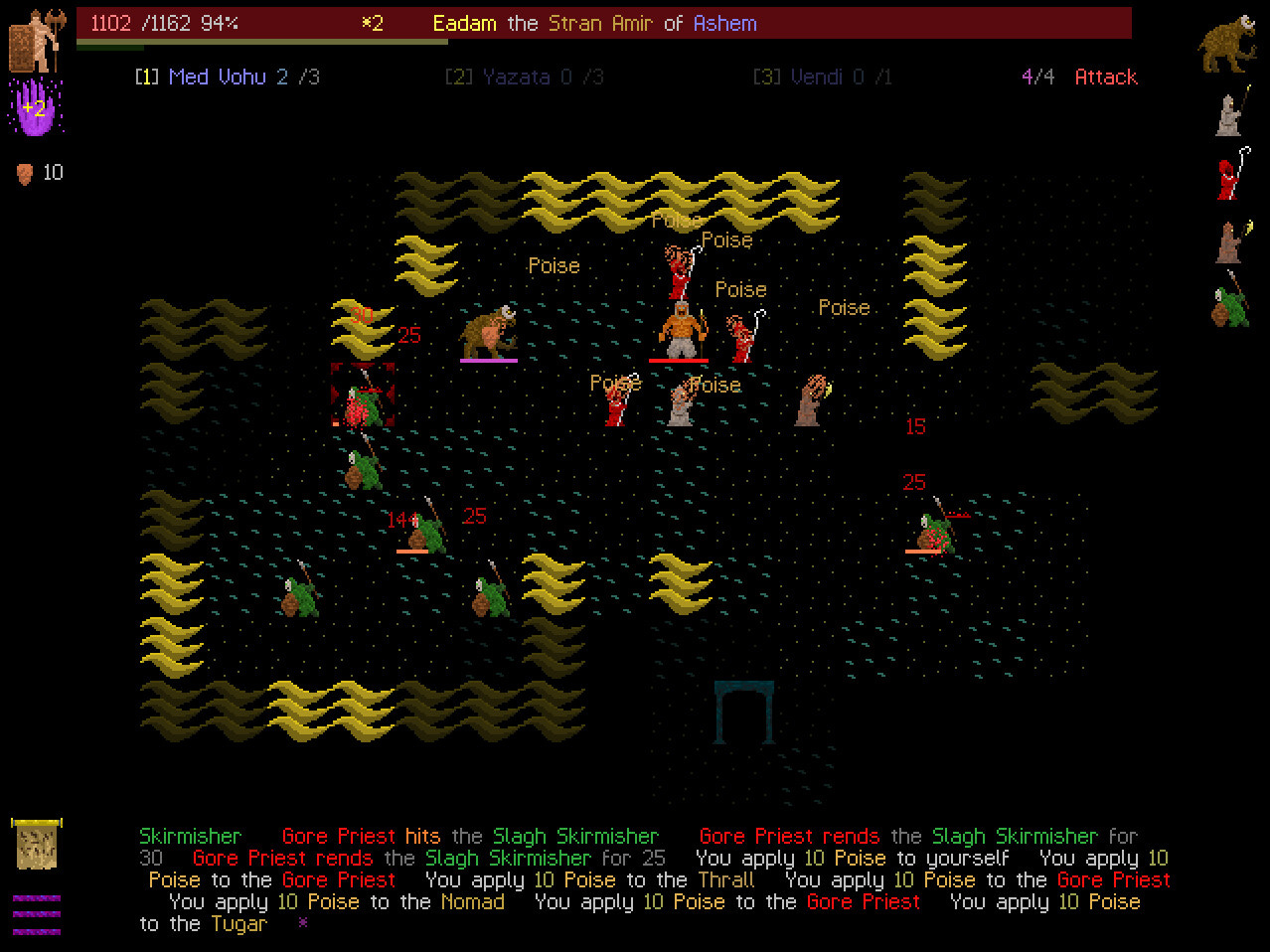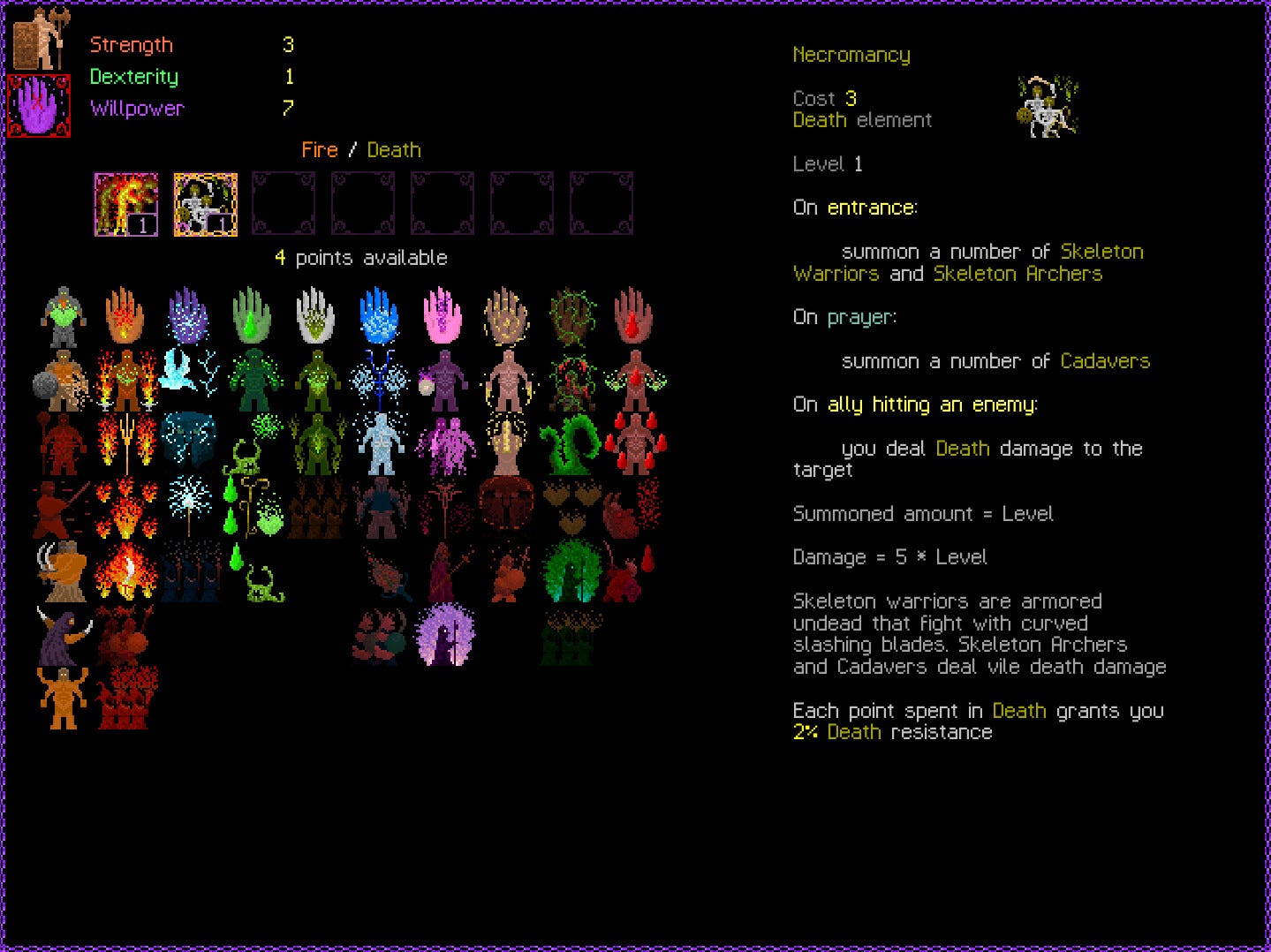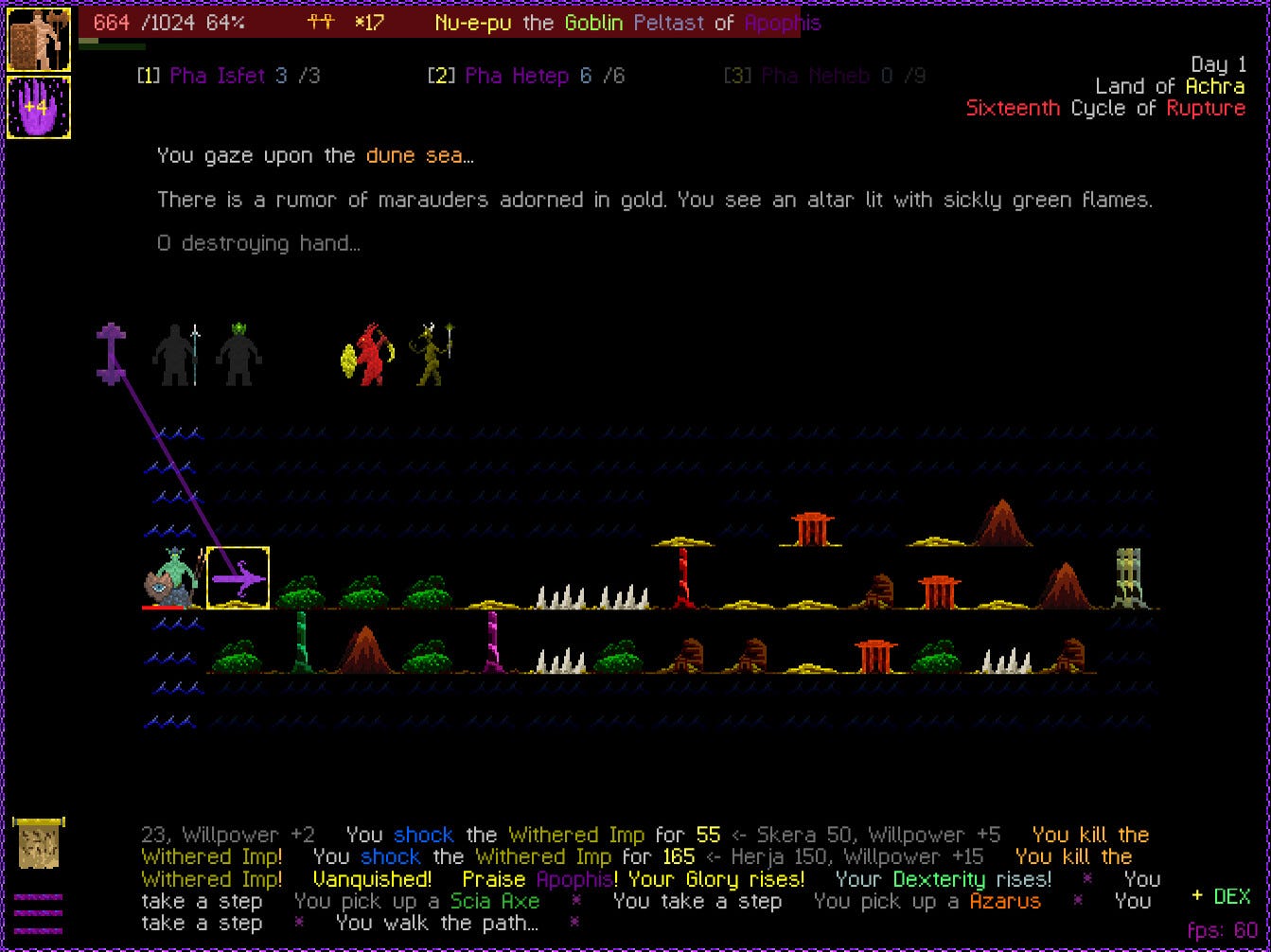My screen is chaos. A monkey man, stationary in the middle of the screen due to magical boots that root him to the ground, casts lightning bolts that bounce between an encroachment of demonic beasts and deities. The lightning bolts kill my enemies in their tracks. However, death is not the end for these foes, as I then raise their corpses to fight for me, their desiccated flesh now chasing any remaining survivors down. As their compatriots in arms fall, my zombie army grows bigger. It is absolute carnage of the highest order, playing out in a pixelated battlefield of magic and myth. This is Path of Achra.
Path of Achra, by looks, could easily be mistaken for some long-lost DOS game. Its lo-fi and charmingly amateurish aesthetic though belies a design sensibility that is fiercely modern, informed by greater movements in game design over the past decade.
It is, ostensibly, a roguelike — a game where you build up your skills over the course of a run that, once ended by your death of victory, reset. Roguelikes are often notoriously lethal, willing to kill the player at the drop of a hat.
In roguelikes, it is on the player to push past the odds and craft some version of themselves that can, against all odds, turn the tide in their favor.
It’s this final moment of euphoric “ascendance” in a roguelike that makes the slog worth it. You’ve got the perfect weapon to complement a perfectly manicured set of abilities and passives. They all activate off of each other, and nothing can stop you.
However, this moment, as spectacular as it is, never arrives for most players. Repeated runs ending in death after an encounter with even the most innocuous of enemies means that most players will quit out of frustration, not willing to continually die over and over for only marginal benefit and progress.
Path of Achra realizes this and instead inverts the typical arc of “buildcrafting” in roguelikes. Instead of working over the course of a whole run to make a worthwhile build, Achra gives you the tools from the start, based on a mixture of your race, class, and god you worship (!), to immediately start cooking with gasoline.
From round one, you get that feeling of having created a “broken build”. Enemies fall immediately at your feet as you watch your carefully chosen abilities mount in their power and combo with each other.
And it only gets more crazy from there. New abilities and skills, all chosen by you, complement and augment your current skillset. Equipment teases out and enhances your runs, helping you to double down on your own decisions. The game also gets harder, throwing larger and stronger swarms of enemies at you.
To be clear, you will still die. Roughly on the same timeline that you would die in a more “traditional” roguelike. However, in that same equivalent timeframe, you will have done significantly more killing in Path of Achra.
What Path of Achra finds is that, if you can watch chain lighting bounce between twenty enemies at once and turn them into zombies on turn 1, you’ll endure a lot of hardship along the way because play itself is, immediately, so damn fun and creative.
Rounds pass and you will have created ten incredible builds before you die. And once you die you’ll go immediatly back in, willing to try out some new permutation you came up with that will only take a few minutes to get setup and cooking.
These combinations of abilities and passives and gear, all pinging and activating off of each other, is also no small technical feat. It requires a deep consideration for rules resolution and action triggering, implying a system that behaves more like a game like Magic or Hearthstone than your run-of-the-mill Action RPG.
It’s for this reason that I knew I wanted to talk with Ulfsire, Path of Achra’s creator. Behind all those skills, equipment, gods, races, classes, etc., is data. I wanted to know how he managed it all, how he authored them, how they all come together to create such a fun videogame.
Enjoy!













